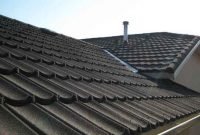Metal roof insulation is one of the most challenging things people do in this field. It demands and requires excellent skill and expertise, which you may only get from a reputable roofing contractor.
With over 15 years in the roofing industry, I have extensive experience in installing and insulating metal roofs. My knowledge is complemented by thorough research and case studies, ensuring that this guide is both accurate and practical.
This article will explore the financial and technical aspects of finding the best method to insulate metal roofing.
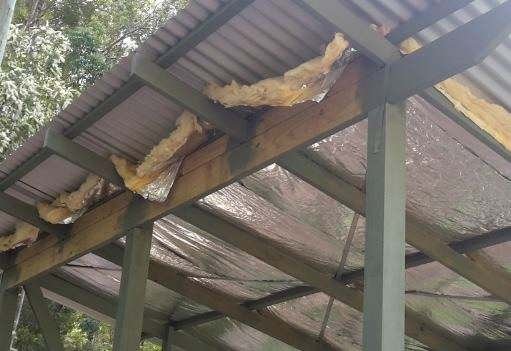
Why Insulate Under Metal Roof Panels?
Insulating under metal roof panels helps regulate indoor temperatures, reducing energy costs and preventing condensation. Effective insulation can also enhance the roof’s durability and the overall comfort of the building.
Roof insulation plays a crucial role in protecting your home from heat loss and condensation. Metals are excellent heat conductors, so heat transfer is inevitable when there is a temperature difference between the inside and outside of your home.
Foam board insulation, including rigid board insulation and closed cell insulation, provides a robust barrier, significantly reducing this heat transfer. Adding an insulation layer can prevent condensation on the metal panels, which could lead to water damage.
There are several options for metal roofs when it comes to insulation. Understanding the properties of each material, like rigid foam board or closed cell spray foam, is vital as they offer different levels of thermal resistance and moisture protection.
Read also: Why Installing Insulation Under Metal Roof Matters?
Proper insulation enhances thermal efficiency and prevents condensation, which can cause rust and deterioration of the metal panels.
Types of Insulation for Metal Roofs
There are several insulation options for metal roofs, each with its pros and cons.
Common Insulation Types
| Insulation Type | Advantages | Disadvantages |
|---|---|---|
| Fiberglass Batts | Excellent air barrier fills gaps and cracks | Can absorb moisture, losing insulating properties |
| Rigid Foam Boards | High R-value, moisture resistant | More expensive, difficult to fit in irregular spaces |
| Spray Foam | Excellent air barrier, fills gaps and cracks | High cost, professional installation required |
| Reflective Insulation | Reflects radiant heat, lightweight | Less effective in colder climates, installation challenges |
Tips to install metal roof insulation
Use foam batting
Foam batting is highly recommended for pairing with roof insulation. Unlike standard insulation that can be rolled up, foam batting is installed directly on the sheath, inside and outside.
It fits perfectly under the metal roofing, reducing the hassle of installation. However, it’s crucial to install a paper liner correctly between the sheathing and the insulation to prevent mold and mildew.
Install by using staples
Using staples will allow you to install the insulation easily and quickly. You can easily install several sheets of insulation in only a few minutes without worrying about security.
Staples will also allow you to get a strong attachment without leaving a big hole, yet easy to remove when a repair is needed.
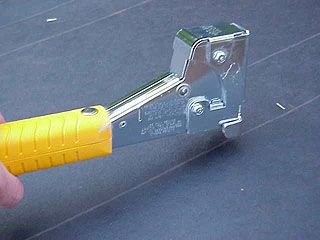
Cut panels on the roof
Before you finish any roofing work, you need to bring the insulation up to the roof. In order to place it quickly, you may also need to cut them precisely according to the size needed.
However, it will be much more effective if you do it when you are up on the roof. Using the ladder will allow you to bring the insulation in one or two times to go up and down.
Leave gaps between panels
You need a gap on the roof so your room can breathe. When you find gaps or channels between the insulation pieces, it is better to leave them that way so the air can get into the house. Still, you need to make sure that the gap is not more than 1/8 inch.
The Most Popular Materials
Fiberglass Batts or Glass Mineral Wool
Exploring different roof insulation options is crucial, as some materials, like fiberglass batts or glass mineral wool, are better suited for reducing noise—a common issue with metal roofs.
Fiberglass batts or glass mineral wool are the most common materials used for insulating metal roofs. Both materials make a great physical barrier between the interior building and the metal roof.
The batts are located side to side on the rafter of the roof. Since they do not make a continuous barrier, air could flow through them easily, which causes heat loss in the end.
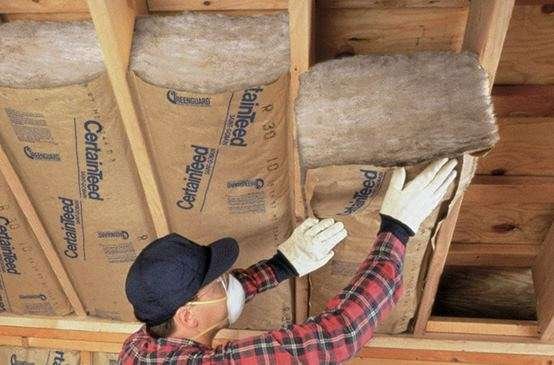
The insulation batts are not a closed system; an additional vapor barrier may be needed. Unfortunately, this barrier cannot be installed directly underneath the roof. Once the water reaches the batts, it needs to be replaced.

This insulation type is not great for metal roofing insulation underlayment. It can still cause water condensation and heat loss without any option to address it. You can always make an intricate fiberglass insulation system. However, it will add cost for the roofing.
Polyurethane Spray Foam Metal Roof Insulation
To add a moisture barrier under metal roof panels, you can spray the undersides of the roof using a thick layer of spray foam insulation.
This proper insulation installation will help you eliminate problems that may arise when the house becomes freezing in the winter and terribly hot in the summer. Spray foam insulation is effective in sealing gaps and crevices, ensuring a complete barrier against thermal leakage.
Since this thing is something that can be sprayed, the foam will penetrate the gaps and crevices to make a complete seal. As a result, any thermal leakage can be prevented from day one.
Read also: How to Insulate Under Metal Roof Panels ?
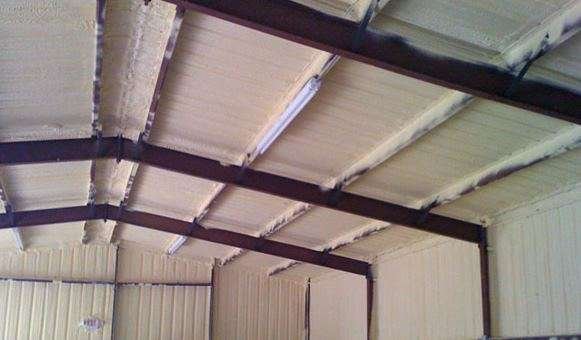
The spray can be applied on top or bottom of the metal roofing surfaces. Compared to the fiberglass batts, this insulation is much better. Financially speaking, this spray is a great option, especially when renovating your roof after the application. The insulation capacity of a 10cm thickness of batts is the same as 10cm of polyurethane foam.
Radiant Barrier Spray Metal Roof Insulation
A stark reality regarding energy usage might be happening a few decades later. In order to reduce energy usage, you may need an effective insulation layer to wrap your home and prevent any unnecessary issues up there. On the other hand, if you do it properly, you can definitely reduce energy loss.
Pairing a reflective insulator with a layer of radiant barrier will help make your home always feel comfortable without consuming high energy. Also, you can save a huge amount on electricity bills.
Read also: Foam Closures for Metal Roofing
No matter if it’s an office or a home, adding roof insulation offers numerous benefits. It can be installed over existing shingles, new roof decking, or open rafters, contributing to a more energy-efficient and durable roofing system.
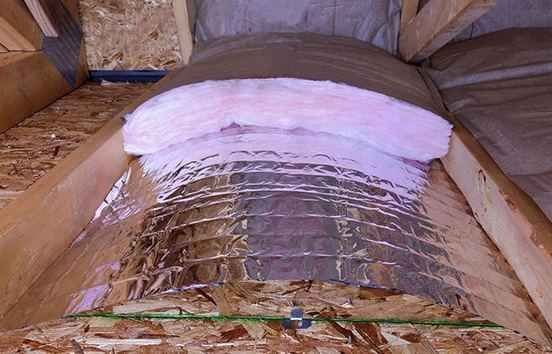
Roof insulation can be added easily when renovating your house. You will need to hire some well-trained roofing insulation experts to make a more energy-efficient home. Or you may also consider metal roofing over rigid insulation details, even though it might be a bit pricier.
From all the roofing materials we have explained above, you are in charge of choosing the best and most suitable for your building. Other than that, some people also consider financial matters before choosing one.
Research and Case Studies
Case Study: Fiberglass Batts vs. Spray Foam
A recent study compared fiberglass batts and spray foam insulation in metal roofs. The results showed that spray foam offered superior thermal performance and moisture control, while fiberglass batts were more cost-effective but less effective in preventing air leaks and condensation.
“Spray foam insulation, despite its higher cost, outperforms fiberglass batts in thermal performance and moisture control, making it a better long-term investment for metal roofs.”
Practical Tips for Insulating Under Metal Roof Panels
- Choose the Right Insulation: Consider factors such as climate, budget, and the specific needs of your building.
- Proper Installation: Ensure insulation is installed correctly to prevent gaps and ensure maximum efficiency.
- Ventilation: Adequate ventilation is crucial to prevent moisture buildup and extend the life of your insulation and roof.
Conclusion
Insulating under metal roof panels is vital in enhancing energy efficiency, comfort, and durability. By understanding the different types of insulation and their installation methods, you can make informed decisions that best suit your building’s needs.
Drawing from first-hand experience, research, and practical examples, this guide aims to provide you with all the necessary information to achieve an effective insulation system.


